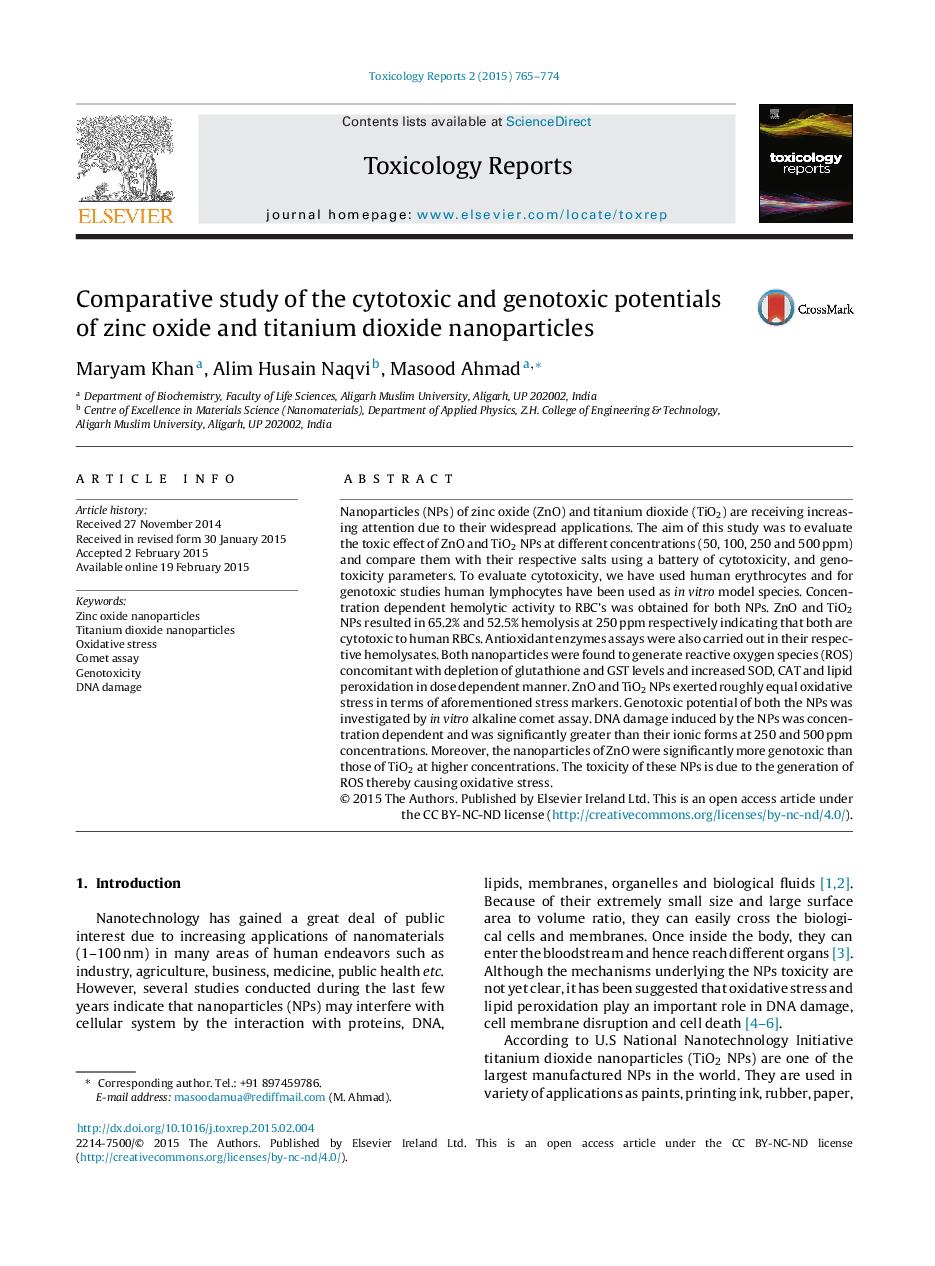| کد مقاله | کد نشریه | سال انتشار | مقاله انگلیسی | نسخه تمام متن |
|---|---|---|---|---|
| 2572271 | 1561192 | 2015 | 10 صفحه PDF | دانلود رایگان |
Nanoparticles (NPs) of zinc oxide (ZnO) and titanium dioxide (TiO2) are receiving increasing attention due to their widespread applications. The aim of this study was to evaluate the toxic effect of ZnO and TiO2 NPs at different concentrations (50, 100, 250 and 500 ppm) and compare them with their respective salts using a battery of cytotoxicity, and genotoxicity parameters. To evaluate cytotoxicity, we have used human erythrocytes and for genotoxic studies human lymphocytes have been used as in vitro model species. Concentration dependent hemolytic activity to RBC's was obtained for both NPs. ZnO and TiO2 NPs resulted in 65.2% and 52.5% hemolysis at 250 ppm respectively indicating that both are cytotoxic to human RBCs. Antioxidant enzymes assays were also carried out in their respective hemolysates. Both nanoparticles were found to generate reactive oxygen species (ROS) concomitant with depletion of glutathione and GST levels and increased SOD, CAT and lipid peroxidation in dose dependent manner. ZnO and TiO2 NPs exerted roughly equal oxidative stress in terms of aforementioned stress markers. Genotoxic potential of both the NPs was investigated by in vitro alkaline comet assay. DNA damage induced by the NPs was concentration dependent and was significantly greater than their ionic forms at 250 and 500 ppm concentrations. Moreover, the nanoparticles of ZnO were significantly more genotoxic than those of TiO2 at higher concentrations. The toxicity of these NPs is due to the generation of ROS thereby causing oxidative stress.
Journal: Toxicology Reports - Volume 2, 2015, Pages 765–774
